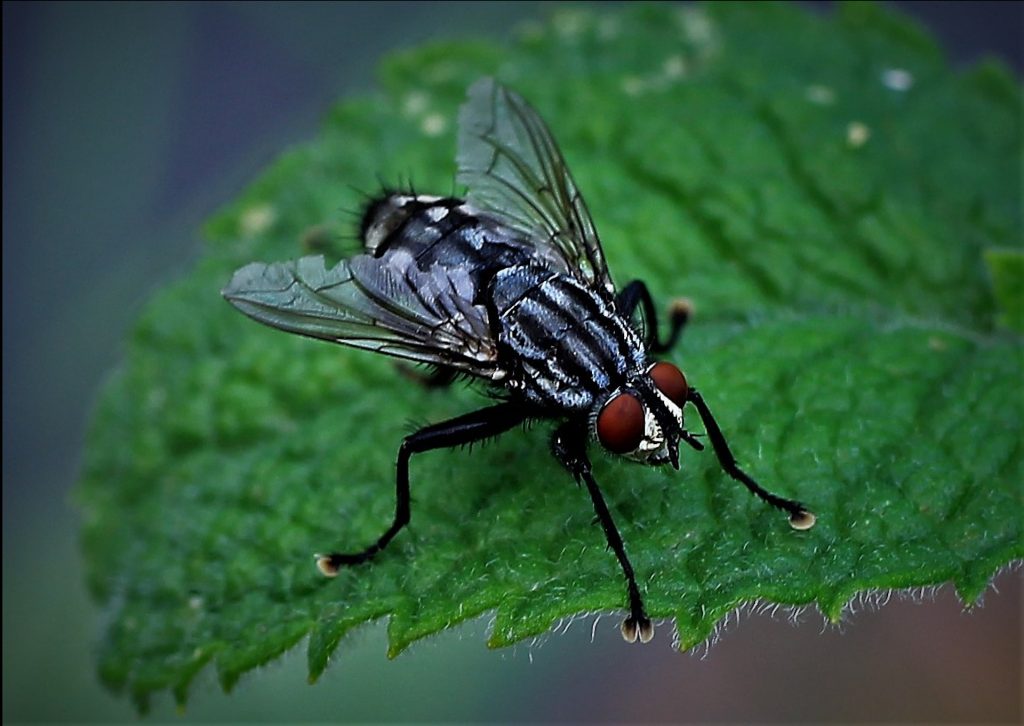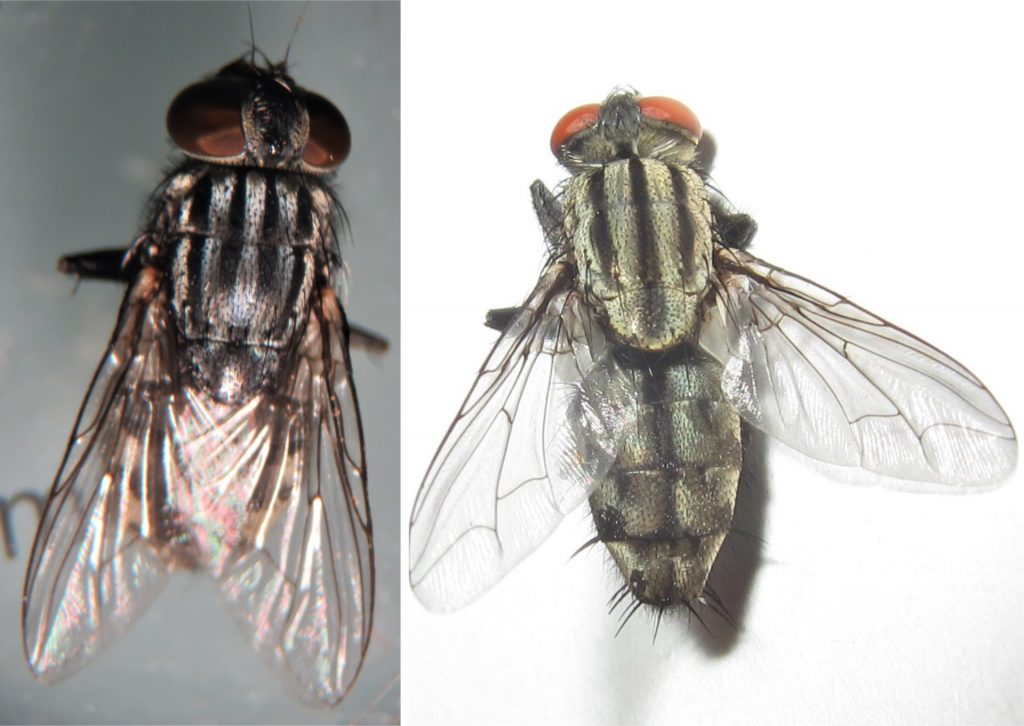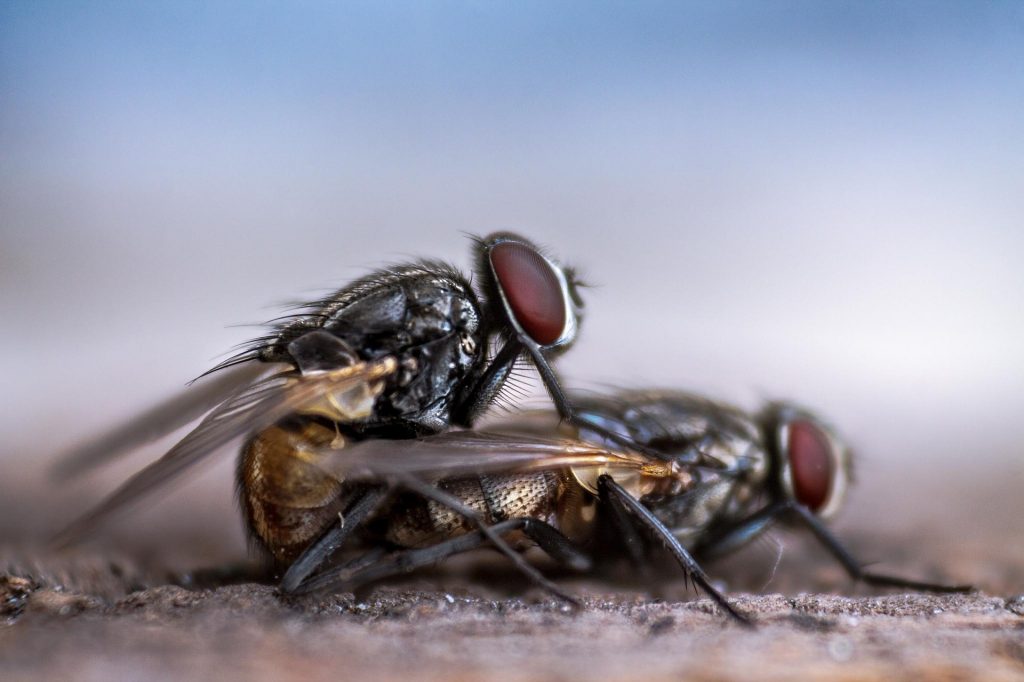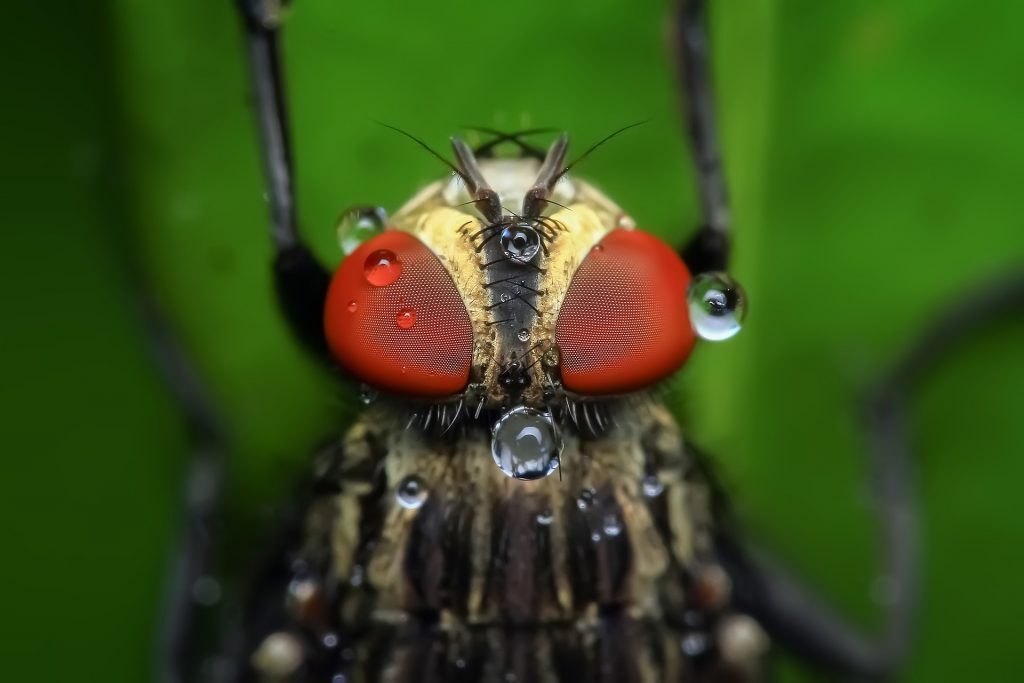
Flesh fly ©Pixabay/Carola68
No one is happy when they suddenly hear the buzzing of a fly in their home. “These insects are annoying and disgusting!” Everyone thinks they are just sitting to feed on excrements and carcasses and are useless. But the opposite is true! In this article, we would like to enlighten the fly from a different angle. The fly is indeed a valuable part to the ecosystem and should be valued accordingly.
The benefits of flies
Flies can be real pests and undoubtedly annoying, but like most other insects, they provide benefits and have a role in the ecosystem.
First of all, we would like to point out that flies can be a match for bees in a fundamental and essential area as they serve as an important pollinator.1
They are not only food for frogs, birds, fish etc., but also help to remove excrements and compost. That is because the fly larvae decompose organic material, such as rotten substances and faeces, and thus contribute to the production of fertile soil.
In research, flies provide valuable insights. For example, in genetic engineering, in the development of gentle insect control or research on disease transmission.
It is also fascinating that flies and insects generally are a great help in forensics. The colonisation of insects on cadavers can, for example, provide crucial clues, about the time or place of death.2
The dangers of flies
Like many things in life, flies also have their dark sides. They can transmit numerous diseases, which is not surprising given their lifestyle and feeding habits.
Flies are attracted by many smells, including of those from excrements, carcasses and spoiled rotten food. Females also like to lay their eggs in such places, which is disgusting to us, so that the larvae have enough food after hatching. Therefore, it is understandable that bacteria and germs also live and proliferate on flies and are also transported by them from A to B.
Insect researchers have captured and examined 116 houseflies and blowflies at different locations (USA, Brazil, Singapore). In total, they found more than 600 germs on the flies, 351 on houseflies and 316 on blowflies. Some of them are known as pathogens that can cause gastrointestinal diseases, blood poisoning and pneumonia.3
Because of their hairy bodies, flies also collect many more bacteria and viruses than, for example, cockroaches. However, the risk of infection is only given if a fly has actually sat on dead carcasses or excrements before. Under good hygienic conditions, the probability of being infected by a fly is very low. But there is still a small residual risk because you can never tell exactly where a fly has actually been.4
Being a little more alert and deliberately scaring away flies does not hurt, but you should not panic. We have all eaten some food at some time, on which a fly may have landed before and nothing happened.
Characteristics and properties of flies
There are over 10,000 species of flies in Central Europe alone5, among the best known are the housefly (musca domestica), fruit fly (drosophila melanogaster), blowfly (calliphora vicina) and the biting house fly (stomoxys calcitrans).
In this feature, we would like to describe the housefly in more detail:
Musca domestica is characterised by their large red compound eyes, which are framed by a thin gold stripe. They are dark grey, have four narrow black lines on their back (thorax) – in contrast to the flesh fly which has three thick lines on the thorax – and grow to about 4 to 7 mm in size.6 Their size depends to a certain extent on the availability of food in the larval stage, whereas females usually become larger than males.

Left: House fly (Musca domestica) with four stripes; Right: Flesh fly (Sarcophaga bercaea) with three stripes ©BioCycle (HK) Ltd
The life cycle of a housefly
A few days after the adult fly emerges from its pupal case, the male fertilizes the female. After that, she is ready for the first oviposition and lays the eggs in batches from 75 to 150 at a time, one by one. For this, flies look for protected places with sufficient food. As already mentioned, they prefer animal dung, cadavers, compost etc. A female can lay eggs about six times in her life span, which accumulates to up to 900 eggs.
In a good climate, the cream-coloured larvae, also called maggots, hatch within one day and start feeding immediately. After three to seven days the maggot has mastered the three larval stages, at 21 – 32 degrees Celsius, and is about 7 to 10 mm in size.
The adult larva then leaves the feeding area to seek a protected dry, cool place where it pupates. The pupa skin is formed from the last larval skin. The colour varies from yellow, reddish and brown to black as the pupa ages. Depending on temperature and humidity, the pupal phase lasts four to six days.
Then the adult fly emerges out of the pupal case, and after its body and wings have hardened for about an hour, it can fly off.
Under optimal conditions, the development from egg to adult fly takes about one week.7
This accelerated process proves that the housefly can reproduce quite quickly, while its entire life span is only two to four weeks. However, this also depends greatly on its habitat.8

Mating flies ©Pixabay/aamiraimer
Prevention with BIO/CLEAN KILL
We all want the flies to stay away from our homes in the first place. Here are a few tips on how to avoid this easily.
First of all, in the warm months when flies are particularly active, it is crucial to cover vegetables and fruit, not to leave food open and to dispose of rubbish properly in order to avoid that these smells would attract a fly very quickly.
However, since it can still happen in the warm months that a fly flies in when opening the door or window without a suitable fly screen, you can also help to prevent it with BIO/CLEAN KILL.
Spray around window and door frames, joints, crevices, cracks, as well as corners and edges in the house where flies rest/stay. Apply Bio/Clean Kill Classic or Bio/Clean Kill micro-fast evenly in these areas. Furniture as well as curtains can be treated due to Bio/Clean Kill’s non-staining properties. This provides for additional protection over a wider area and when the flies settle onto these surfaces they will quickly come into contact with the residual effect of the active ingredient.
To enjoy coffee and cake in the garden in peace, the table area, chairs and other fixtures/furniture can be treated in advance with Bio/Clean Kill micro-fast. But food must not be sprayed directly.
Interesting facts about flies
- The climbing technique: Flies have tiny barbs on their feet, which allow them to move easily on walls. When the ground is too slippery to get a grip, they use Van-der-Waals-forces. That is alike spiders and geckos, which are sticking to the surface due to the attraction created between the molecules of the feet and the surface. However, flies can also increase this adhesion by producing a sticky substance with the hairs on their feet. This method allows them to cling to any surface, even smooth ones, such as windows, and upside down.8
- Only liquid food: Flies have no mouthparts to chew hard food, so the housefly vomits digestive juices onto its meal, which help it to decompose the food enabling it to suck it up with its proboscis.
- Almost 360-degree view: The compound eyes of a housefly provide it with the unique possibility to see almost 360 degrees, even behind itself. This capability is of course an advantage for the fly, as it can keep a sharp eye out for dangers and react quickly.9
- Fast reaction time and flight start: A fly has very short conduction path from the eye to the leg muscle, which enables an almost immediate reaction time. Besides, “sensors” on the legs serve as switches for fast start or shutdown of the flight muscles. When the fly jumps up for take-off, it starts its muscle motor and on landing the engine is automatically switched off.
- Poor see sight: Although a fly can react very quickly, its vision is not so sharp. Humans on one hand have a lens and behind it a retina that recognises millions of pixels. A fruit fly, on the other hand, has 750 facets and only one pixel per facet, which is just 750 pixels per image.5
As disgusting as flies sometimes seem to us, they are also fascinating and necessary for our environment. Yes, they can be a health risk, but in areas with good hygienic conditions, the risk is very low. They deserve to be able to live if there is the possibility.

Red compound eyes of a fly ©Pixabay/ROverhate
Click here to see: WORLD OF FLIES – REFERENCES